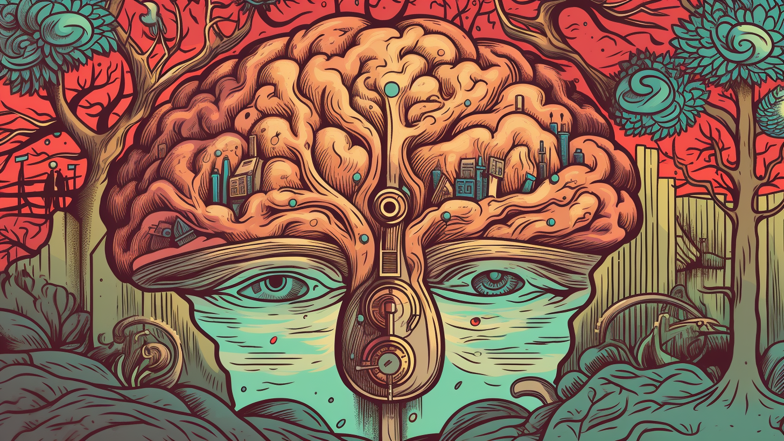
Cognitive neuroscience studies range from simple behavioral tasks, such as perception and attention, to more complex processes like language comprehension and decision-making. Researchers in this field investigate the neural networks and patterns of activity that occur in the brain during these processes. In essence, they seek to understand the wiring of the brain and how that wiring enables humans to think, feel, and behave the way they do.
One of the key findings in cognitive neuroscience is that the brain is highly adaptable and constantly changing. This is due to a property called neuroplasticity, which refers to the ability of the brain to reorganize itself in response to experience. Scientists have found that the brain can develop new connections between neurons, strengthen existing connections, and even grow new neurons in certain areas.
This plasticity explains why the brain can recover from injuries and adapt to new situations. For instance, if one part of the brain is damaged due to a stroke, other parts of the brain can take over its functions. The ability of the brain to adapt and change is crucial for learning, memory, and recovery from injury.
One of the most intriguing areas of cognitive neuroscience is the study of decision-making. How do humans make decisions, and what are the neural mechanisms underlying this process? Scientists have discovered that the prefrontal cortex, a region at the front of the brain, is heavily involved in decision-making. This region is responsible for weighing the pros and cons of various options and choosing the best course of action.
When faced with a decision, the brain generates a large amount of neural activity, which can be measured using neuroimaging techniques like functional magnetic resonance imaging (fMRI). Researchers have found that different areas of the brain become activated depending on the type of decision being made. For example, deciding whether to buy a car or a house involves the activation of the ventromedial prefrontal cortex, whereas deciding between two different brands of cars involves the activation of the dorsolateral prefrontal cortex.
Another area of research in cognitive neuroscience is the study of consciousness. What is consciousness, and how is it generated by the brain? Scientists have been grappling with this question for decades, and there is still much we don't know. One theory is that consciousness arises from the integration of information in different parts of the brain. When information from different sensory modalities (such as vision, hearing, and touch) is integrated in the brain, we become aware of our surroundings and our own existence.
Some scientists have even proposed that consciousness is an emergent property of complex information processing in the brain. This theory holds that consciousness is not confined to a specific region or network in the brain but arises from the interactions between different areas. This idea is still controversial, and there is much debate over the nature of consciousness and how it is generated by the brain.
In recent years, there have been exciting breakthroughs in cognitive neuroscience, thanks in large part to advances in neuroimaging technology. For instance, researchers have developed techniques for imaging the activity of individual neurons in the brain, giving us unprecedented insights into neural processes at the cellular level. Another important development has been the advent of functional connectivity imaging, which allows us to visualize the patterns of neural activity across different regions of the brain.
One area of research that has been gaining momentum in recent years is the study of neural networks. Neural networks are groups of interconnected neurons that work together to carry out specific functions. By studying these networks, scientists hope to gain a deeper understanding of how the brain processes information and generates behavior.
One promising approach to studying neural networks is the use of artificial intelligence (AI) and machine learning techniques. Researchers have been developing algorithms that can simulate the behavior of neural networks, allowing us to test different hypotheses about how the brain works. For example, researchers can use AI to simulate the activity of neurons in the visual cortex and investigate how the brain processes visual information.
Cognitive neuroscience has many exciting applications in medicine and technology. For instance, neuroprosthetics are devices that can be implanted in the brain to restore lost function, such as the ability to move or speak. Brain-computer interfaces (BCIs) are another promising area of research, which could allow paralyzed individuals to control prosthetic limbs or computers using their thoughts.
Finally, cognitive neuroscience has important implications for education and learning. By understanding the neural mechanisms underlying learning and memory, educators can develop more effective teaching strategies and interventions for students with learning disabilities. Cognitive neuroscience also has important implications for mental health, as it can shed light on the neural mechanisms underlying psychiatric disorders such as depression, anxiety, and schizophrenia.
In summary, cognitive neuroscience is an exciting and rapidly-evolving field that promises to unlock the mysteries of how the human brain works. By studying the neural mechanisms underlying behavior, emotion, and cognition, scientists in this field hope to develop new treatments for brain injuries and mental disorders, as well as new technologies that will improve our quality of life. From the study of neural networks to the exploration of consciousness, cognitive neuroscience offers infinite possibilities for discovery and innovation.
Comments
Post a Comment